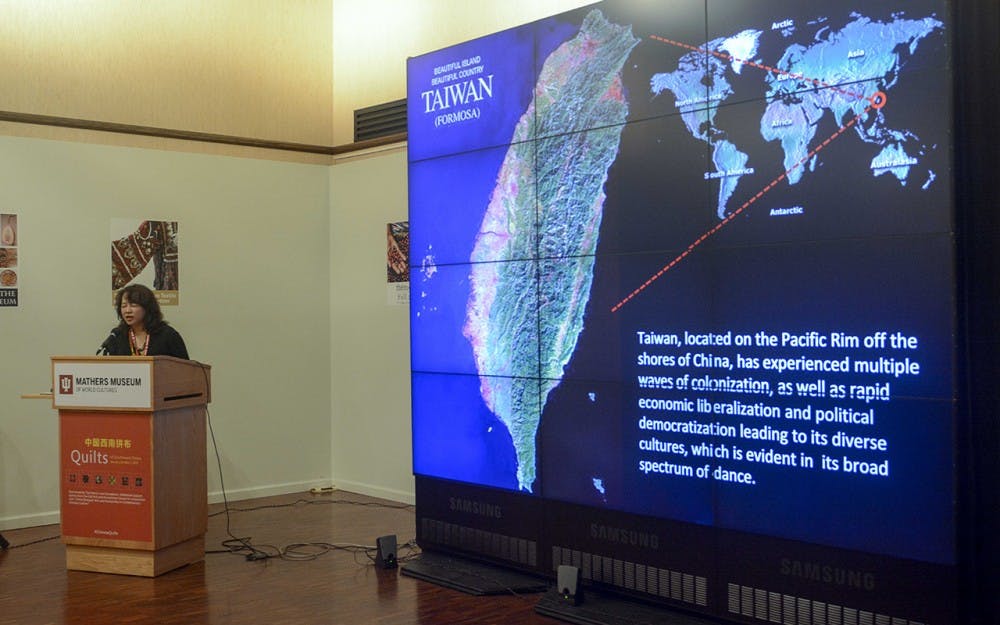In partnership with “China Remixed,” the Mathers Museum of World Cultures offered a look into the world of contemporary dance as it relates to Taiwanese culture.
Chi-Fang Chao, associate professor of the Department of Dance at Taipei National University of the Arts, spoke at the museum Sunday evening on the topic of “Dancing as the Practice of Multiculturalism in Contemporary Taiwan.”
Elizabeth Shea, director of the IU contemporary dance program, extended her welcome to the 22 dancers, two faculty members and two family members from Taipei National University of the Arts.
“This is our first official event of this cultural exchange, and we are thrilled to welcome Dr. Chi-Fang Chao,” Shea said.
The cultural exchange includes the opportunity for students in IU’s contemporary dance program to perform Feb. 24 alongside the 22 students from Taipei.
Chao began her lecture to students and faculty from IU’s program as well as the visiting students with information about her background in anthropology as it relates to her study of dance across Taiwan.
“I come from a background of anthropology, and anthropology is always tied to comparison of culture,” Chao said. “We come from the perspective of our own culture then we come across different people, different ways of moving.”
Chao highlighted a brief history of Taiwan before going into the specific areas that branch out into contemporary Taiwanese dance as an aspect of culture.
She spoke about the roots of Taiwanese dance culture as they are tied to either indigenous practice or remnants of colonization, which happened at the hands of a variety of groups throughout history including the Japanese and Chinese.
“China is a very meaningful concept for us to think about this process of cultural mixture in terms of the spatial and historical,” Chao said.
Following the history, Chao moved into the various categories, which exist in dance tradition based in Taiwan, including dances proliferated by indigenous peoples, Han Chinese and more modern Chinese regional opera, not limited to Peking Opera.
“Performers are people, so different people will express differently and will construct a very different scene in performing arts, including dancing,” Chao said.
When discussing the practice of indigenous people, Chao said there is an element of spiritual connection to ritual and movement.
“Most of the indigenous people are animistic, they believe in spirits, could be their ancestral spirits or nature,” Chao said. “Ritual has become such an important occasion for most of the indigenous groups. Also, ritual provides a ground for tradition of songs and dances to be preserved.”
Contemporary dance in Taiwan also developed in connection with Japanese and Western contemporary dance styles, respectively, with such names as modern dance pioneer Tsai Jui-yeuh and Liu Feng-Shueh of the Neo-Classic Dance Company.
“Because of the Taiwanese colonization, some of the pioneer artists were invited to tour Taiwan in the late 1930s, and that really spread the seed into the soil and inspired some of the very early modern dance practitioners in Taiwan,” Chao said.
Anthropology allows for people to look at similarities, even as it deals with dance and movement in particular, Chao said.
“We go back and find the commonness and difference and think back why we, as human beings, have this eagerness to dance, and to dance with human beings and to express our feelings with others,” Chao said.






